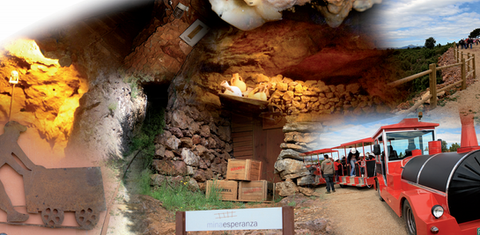INDUSTRY - GEOLOGY - ENVIRONMENT - MINING - ENERGY - GEOMATICS - CONSTRUCTION
.png)
139 MINING AND GEOLOGICAL DESTINATIONS AT A CLICK,
WHAT COMMUNITY WILL YOU VISIT?
To play, press and hold the enter key. To stop, release the enter key.












To play, press and hold the enter key. To stop, release the enter key.












To play, press and hold the enter key. To stop, release the enter key.










CATALONIA
23 DESTINATIONS TO DO MINING TOURISM.
If you know of any other mining destinations that are not here, please let us know.


























ARAGON
8 DESTINATIONS TO DO MINING TOURISM.

If you know of any other mining destinations that are not here, please let us know.








ASTURIAS
12 DESTINATIONS TO DO MINING TOURISM.

If you know of any other mining destinations that are not here, please let us know.












ANDALUSIA
22 DESTINATIONS TO DO MINING TOURISM.
If you know of any other mining destinations that are not here, please let us know.


























NAVARRE
1 DESTINATION TO DO MINING TOURISM.
If you know of any other mining destinations that are not here, please let us know.





VALENCIAN COMMUNITY
2 DESTINATIONS TO DO MINING TOURISM.
If you know of any other mining destinations that are not here, please let us know.





MURCIA
2 DESTINATIONS TO DO MINING TOURISM.
If you know of any other mining destinations that are not here, please let us know.





CANARY ISLANDS
6 DESTINATIONS TO DO MINING TOURISM.
If you know of any other mining destinations that are not here, please let us know.









CANTABRIA
3 DESTINATIONS TO DO MINING TOURISM.
If you know of any other mining destinations that are not here, please let us know.





CASTILLA AND LEÓN
15 DESTINATIONS TO DO MINING TOURISM.
If you know of any other mining destinations that are not here, please let us know.





















CASTILLA LA MANCHA
10 DESTINATIONS TO DO MINING TOURISM.
If you know of any other mining destinations that are not here, please let us know.











BASQUE COUNTRY
8 DESTINATIONS TO DO MINING TOURISM.
If you know of any other mining destinations that are not here, please let us know.









BALEARIC ISLANDS
5 DESTINATIONS TO DO MINING TOURISM.
If you know of any other mining destinations that are not here, please let us know.






THE RIOJA
3 DESTINATIONS TO DO MINING TOURISM.
If you know of any other mining destinations that are not here, please let us know.





MADRID
4 DESTINATIONS TO DO MINING TOURISM.
If you know of any other mining destinations that are not here, please let us know.





ESTREMADURA
8 DESTINATIONS TO DO MINING TOURISM.
If you know of any other mining destinations that are not here, please let us know.









GALICIA
7 DESTINATIONS TO DO MINING TOURISM.
If you know of any other mining destinations that are not here, please let us know.

















